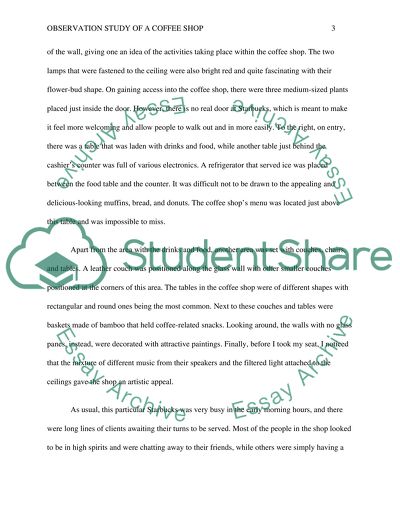Cite this document
(“Observation Study of a Coffee Shop Essay Example | Topics and Well Written Essays - 1750 words”, n.d.)
Retrieved from https://studentshare.org/psychology/1486870-observation-study-of-a-coffee-shop
Retrieved from https://studentshare.org/psychology/1486870-observation-study-of-a-coffee-shop
(Observation Study of a Coffee Shop Essay Example | Topics and Well Written Essays - 1750 Words)
https://studentshare.org/psychology/1486870-observation-study-of-a-coffee-shop.
https://studentshare.org/psychology/1486870-observation-study-of-a-coffee-shop.
“Observation Study of a Coffee Shop Essay Example | Topics and Well Written Essays - 1750 Words”, n.d. https://studentshare.org/psychology/1486870-observation-study-of-a-coffee-shop.


